
- Home
- India
- World
- Premium
- THE FEDERAL SPECIAL
- Analysis
- States
- Perspective
- Videos
- Sports
- Education
- Entertainment
- Elections
- Features
- Health
- Business
- Series
- In memoriam: Sheikh Mujibur Rahman
- Bishnoi's Men
- NEET TANGLE
- Economy Series
- Earth Day
- Kashmir’s Frozen Turbulence
- India@75
- The legend of Ramjanmabhoomi
- Liberalisation@30
- How to tame a dragon
- Celebrating biodiversity
- Farm Matters
- 50 days of solitude
- Bringing Migrants Home
- Budget 2020
- Jharkhand Votes
- The Federal Investigates
- The Federal Impact
- Vanishing Sand
- Gandhi @ 150
- Andhra Today
- Field report
- Operation Gulmarg
- Pandemic @1 Mn in India
- The Federal Year-End
- The Zero Year
- Science
- Brand studio
- Newsletter
- Elections 2024
- Events
- Home
- IndiaIndia
- World
- Analysis
- StatesStates
- PerspectivePerspective
- VideosVideos
- Sports
- Education
- Entertainment
- ElectionsElections
- Features
- Health
- BusinessBusiness
- Premium
- Loading...
Premium - Events
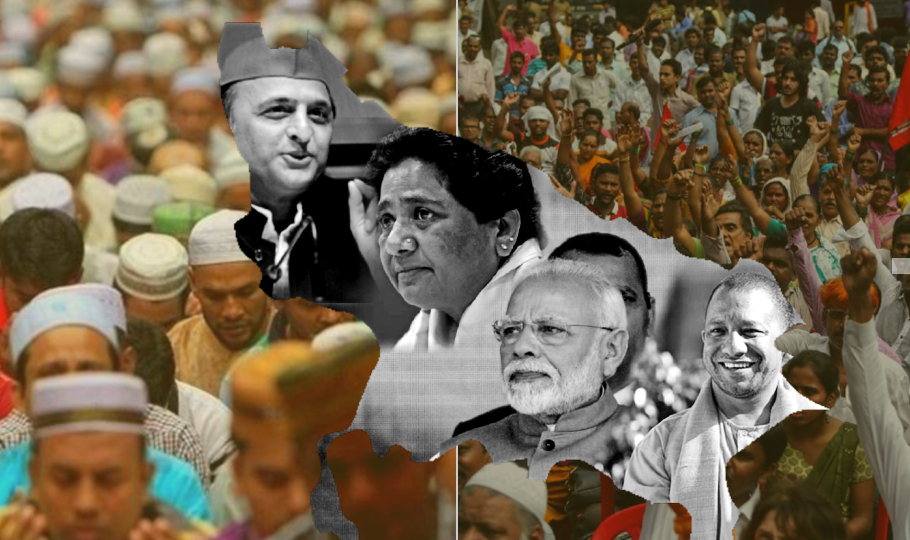
How Dalit-Muslim votes could play out in 'unparalleled' UP
Dalits and Muslims are centrepieces in Uttar Pradesh crucible. How their interests converge or diverge could decide not only the future of those in power in Lucknow but also in Delhi.

Dalits and Muslims are centrepieces in Uttar Pradesh crucible. How their interests converge or diverge could mark a sea-change in the political complexion of the state in the oncoming 2022 electoral Mahabharat in the state. They would decide not only the future of those in power in Lucknow but also in Delhi. More importantly, they are the ones who can decide whether politics in UP would...
Dalits and Muslims are centrepieces in Uttar Pradesh crucible. How their interests converge or diverge could mark a sea-change in the political complexion of the state in the oncoming 2022 electoral Mahabharat in the state. They would decide not only the future of those in power in Lucknow but also in Delhi.
More importantly, they are the ones who can decide whether politics in UP would transcend the identity politics trap of casteism-communalism binary and development-for-all subalterns takes centrestage. Hence, their recent evolution and inter-relations gains significance.
Although Dalits and Muslims comprise around 20% each of the UP population, politics is never decided as an arithmetic sum in purely demographic terms. The actual state they are in and the interface between them differ from area to area and also depend upon their mutual relations with other castes.
For instance, Yadavs and Muslims are known for their proximity to each other and both have rallied solidly behind Samajwadi Party.
Unlike them, Mohammad Salim, a leader of CPI(ML) Liberation in UP, says Dalits have strong antipathies towards Yadavs, not only in SP strongholds like Mainpuri, Etawah and Kannauj but even in many Poorvanchal (eastern UP) villages. This is partly because they are extremely aggressive and even violent when agrarian issues crop up between dalit agricultural labourers and the newly affluent Yadav rich peasantry.
In village politics, Yadavs exercise raw power with brute force and seldom exercise the conventional patron-client influence over Dalits known among some landed gentry from some other castes.
Mutual hostility
Although Samajwadi Party (SP) came to power repeatedly in UP—either in alliance with Mayawati’s BSP or with its outside support—it never succeeded in giving due representation to Dalits and accommodating them in power just as it failed to share power with the non-Yadav OBCs and MBCs also. So Muslims are also a bit suspect in dalit eyes and the enemies’ friends-are-also-adversaries syndrome comes into play.
Zafar Bakht, a prominent civil society personality who owns Bal Bharti School in Prayag raj, however, rejects this idea and challenges the very notion that Muslims as voters are a monolithic bloc and all of them vote for SP en masse. If that is true, then SP would not have ended up with only 21.82% of votes in 2017 assembly polls in UP despite alliance with the Congress or just 18.11% in the 2019 Lok Sabha polls despite support from RLD and Congress. Zafar also denies that the chasm between Dalits and Muslims is due to the latter’s proximity to Yadavs.
Zafar Bakht tells The Federal, “Just as Mayawati can be described as dalit leadership in UP, there is no unified Muslim leadership in UP. Their leaders are mostly Hindus like Mulayam Singh or Akhilesh Yadav. So naturally a conscious strategy from above for forging a unity with Dalits is absent and Muslims are just passive political partners of Yadavs.”
He also explains that Muslims are mostly artisans, traders or owners of informal units and their voting for SP is due to occupational and workplace-affinity with the Yadavs and other OBCs and MBCs.
But, he admits, there is also a sizable landed gentry among Muslims in Poorvanchal, and they too boss over Dalits.
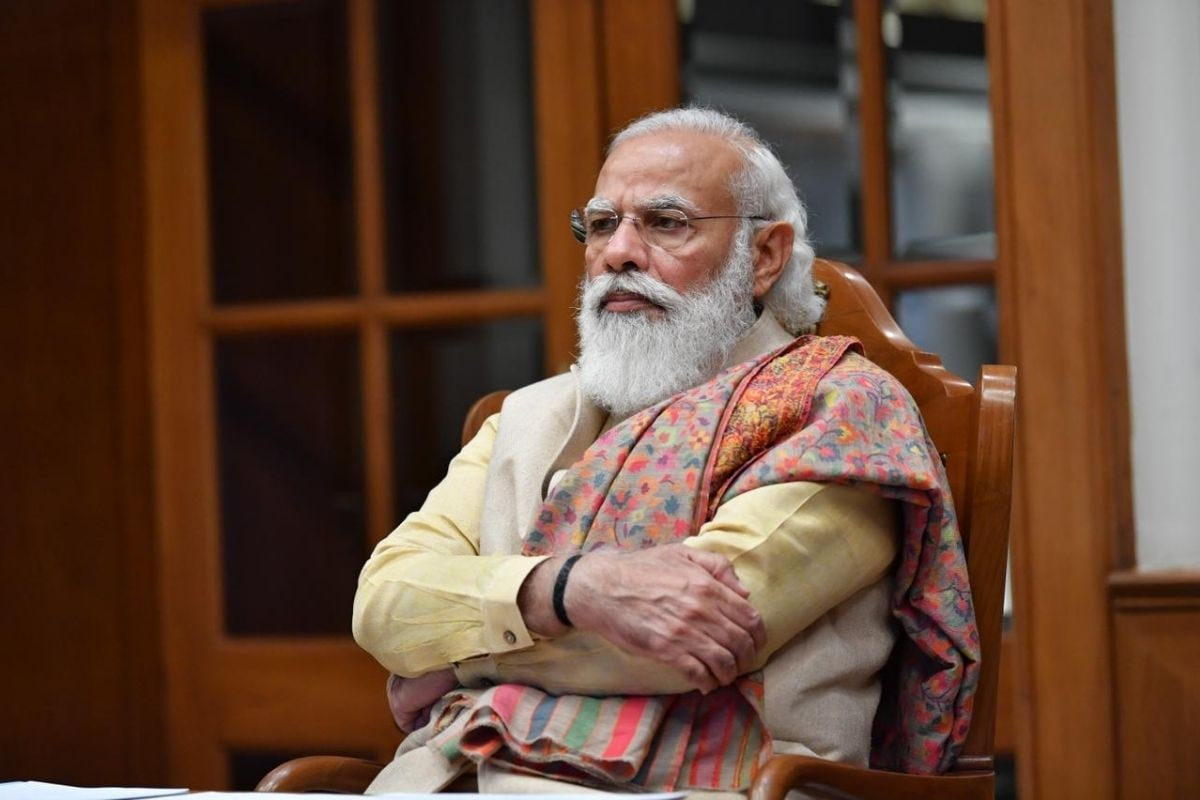
Dr Vinay from Azamgarh tells The Federal that in Azamgarh the landed classes among Muslims are Khans and Sayyads and their relationship with local Dalit labourers is strained. They behave with Dalits in exactly the same manner as the upper caste Hindus. Although they don’t practice untouchability, they resort to other methods of coercion like not hiring Dalits for work or not giving lands to them for sharecropping.
Such hostility ensured that the Dalits maintained a safe distance from the Samajwadi party. On the other hand, the party, in its bid to garner more of population, even tried to accommodate a section of upper castes like Rajputs but never a section of Dalits or, for that matter, even Brahmins, as a social category. While its Lohiaite legacy can partly explain the neglect of Brahmins, why Dalits never figured under its political umbrella remains a puzzle.
Zaigham Khan, a prominent journalist in Prayagraj and a key figure in local minority politics, says, “It is pointless for SP to even try to win over Jatavs as they will all solidly vote for Mayawati only since they have been empowered by Mayawati hailing from among their own community.”
He suggests that the SP should try to woo non-Jatav (Chamars) Dalits and other Most Backward Castes (MBCs). These sections are not totally impoverished in UP.
Dalits own small patches of land along the irrigated Gangetic banks and see decent cash income. Among the MBC and OBC youth, riding a motorcycle, especially the Royal Enfield Bullet, is a macho status symbol. If 40 out of 400 OBC-MBC youth own such bikes, then dalit youth—who migrate to Surat or Punjab for wage work and bring back lumpsum cash income—buy at least 20 bikes. Although they are just labourers, their status resembles that of the emerging neo-middle classes, larger in size than the conventional educated upper caste middle classes in the bureaucracy and other white-collar jobs. Zaigham Khan argues that with the huge hike in petrol and diesel prices, the BJP will “face a political fallout similar to how the onion price hike brought down the Manmohan Government”.
He further argues that since unemployment is acute among educated youth, OBC-MBC youth are particularly stirred by Akhilesh Yadav’s recent promise of 10 lakh new jobs in the first three months if elected to power. Akhilesh has also promised 300 units of free power supply to all poor households and that has an electrifying impact among the poor.
But Zafar Bakht feels short-term populist sops might not have a durable political impact. People are extremely fed up with the pandemic handling of Yogi Adityanath and some tangible promise of health infrastructural development might help.
Both Zafar and Zaigham however point to the fact that Akhilesh has taken lessons from the negative fallout of his earlier ‘Yadavs-only’ stint in power and has started talks with small caste parties of Nishads and Rajbhars and the MLAs of BSP expelled by Mayawati. Both hope that there would be a more democratic seat- and power-sharing by Akhilesh this time.
Muslims are generally suspicious of Mayawati as she had repeatedly aligned with the BJP in the past. In spite of this, there are some prominent Muslim local leaders in BSP. In fact, there are more Muslim leaders in BSP than there are dalit leaders in SP. Mayawati also never bothered to dispel this suspicion but preferred to play ambiguity card and once even said she did not care so much for Muslim votes. Common Muslims remember that.
But Zafar Bakht dismisses the idea that Muslims do not and cannot win over Dalits. He cites the example of Muktar Ansari, the BSP don who used to repeatedly win from jail thanks to a good backing from Dalits in Poorvanchal.
Occupational contradictions
The economy of several small towns in UP are based on informal clusters where Muslims as employers confront Dalits as labourers. According to Mohammad Salim, when class conflicts break out, Dalits also gain upper hand sometimes.
“For instance, they destroyed the spinning wheels of upper caste Muslim owners in Mau and attacked owners of footwear units in Kanpur but there is hardly any such contradiction between poor labouring Ansari Muslims and Dalits,” he says.
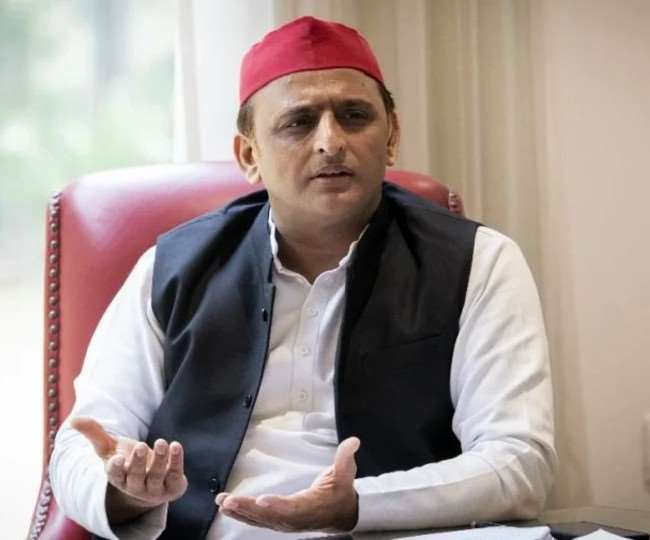
In Etawah, once considered the fortress of Mulayam Singh, the BJP votes increased last time because the Yadavs there were aggressive like upper castes toward Dalits.
Muslims and Dalits stand in similar contradictory employer-employee relation in brassware clusters in Moradabad and Mirzapur, glassware cluster in Firozabad, footwear clusters in Kanpur and Saharanpur, craft-printing cluster in Farrukhabad etc., but Zafar Bakht says that despite class contradictions, sharp hostility and violent outbursts between Muslims and Dalits are rare.
Unstable vote-bank
In electoral politics, no convergence between polar social camps remains a taboo forever. Mayawati cementing an alliance with Brahmins and to some extent with other upper castes with her slogan, ‘Sarvajan Unity’ and BSP coming to power on its own in 2007 with the support of these communities amply prove this is where Brahmins and dalits became strange bedfellows.
But even while opting for it as a “necessary evil” to get rid of what they considered as the greater evil of the Yadav Raj of SP, the Brahmins were unhappy about BSP’s lead over them and were preparing to consolidate their position in power under their own lead by strengthening the BJP.
But while Mayawati was able to command the support of the whole of the Brahmin community, the BJP has not been able to command the total loyalty of the entire dalit population or even a major section of it. They have succeeded in rallying a majority of the non-Jatav dalits in many districts though.
Zafar Bakht cautions against jumping to the conclusion that Mayawati has already decided to go over to the BJP camp. Much depends on who gets how many seats or whether Yogi manages a majority on his own. Bakht opines that even in her post-poll alliances, Mayawati plays a hardball and it is too early for a guess work. In his opinion, it is the pro-BJP upper caste sections in the media who are creating an image build-up that Mayawati has already crossed over to the BJP camp.
Bureaucracy is one area of power struggle between caste groups. Thanks to acute unemployment among educated upper caste youth in the industrially barren UP, anti-reservation feelings are again on the rise among them. But the upper castes, with their traditional dominance in the higher bureaucracy, do not fear dalits’ entry into bureaucracy as a serious challenge to their hegemony within the officialdom as much as they resented the Yadav and Rajput postings and recruitment during SP rule made in a fraudulent manner.
In fact, in academia, the Brahmins have a sharper contention with Kayasthas and Rajputs than with dalits and it is similar in the higher state bureaucracy as well.
There is also a strong informal caste networking between upper caste officials in the Central and State bureaucracies and the OBC and dalit officials cannot match similar influence through caste solidarities.
RSS, more than the state BJP leadership, consciously tries to incorporate dalits into the BJP fold, as witnessed even during the recent expansion of the Union Council of Ministers. However, tactical social and political alliances are one thing but durable accommodation and power sharing is a different proposition that is nowhere to be seen in the dalits-upper caste alliance of convenience. Exactly like Modi at the Centre, Yogi is the sole hero in UP. Representational democracy and power sharing lose much of their meaning in such a scenario.
Ironically enough, despite a successful upper caste consolidation under the BJP in 2017, Brahmins perceive Yogi’s rule as Thakur Raj and sections of Brahmins—including some in the BJP—have started openly expressing disgruntlement.
Mohammad Salim says that when Akhilesh Yadav visited a Vindhya Devi temple in Vindhyal in Mirzapur, all the pandas (temple priests) complained that their conditions were precarious and that Akhilesh should rise like the Krishna of Yaduvansh to protect the Sudamas. A video of this went viral. Although the SP cannot win over sections of Brahmins, it tries to narrow down the chasm with them.
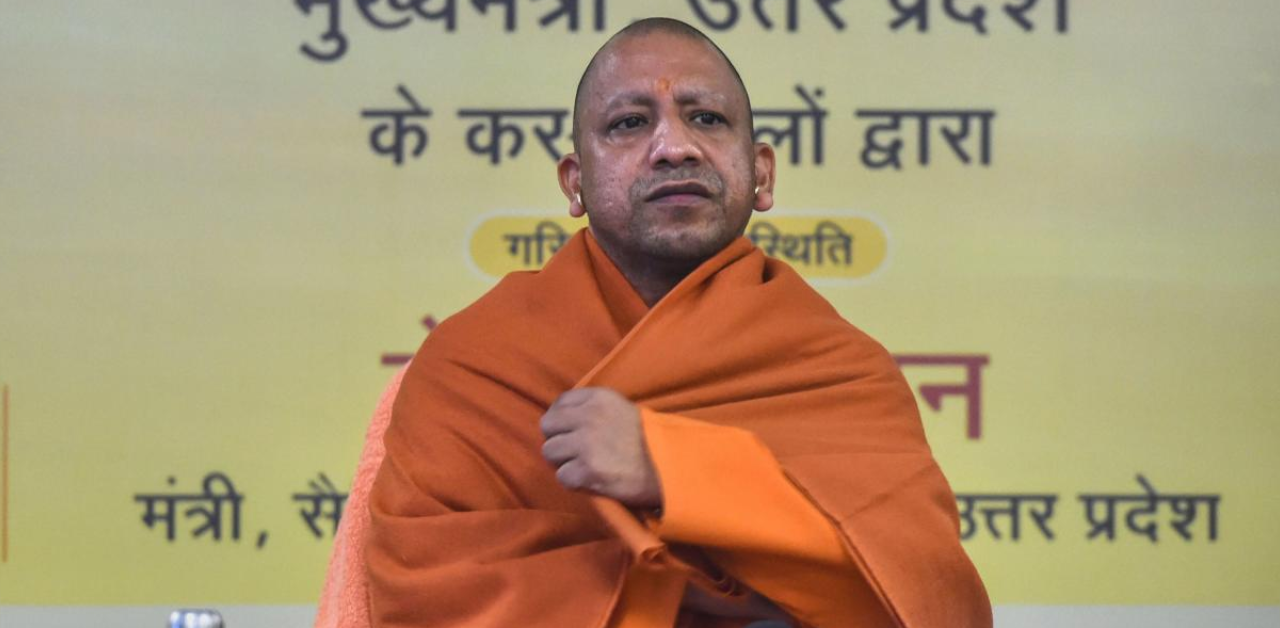
A subtle distinction
Mohammad Salim says he had taken fact-finding teams during three instances of communal riots in Western UP including Muzaffarnagar riots. Their findings reveal that it is the Hindutva brigade that instigated and pitted Dalits to attack Muslims. Strangely, unlike Western UP, Muslims are demographically and politically strong in Faizabad region but there have been no reports of communal riots in recent times despite major provocations by VHP Ayodhya ceremonies.
Rather, the Hindutva brigade stands discredited among Hindus thanks to the recent revelation on purchase of land for Ram temple complex at highly inflated prices.
While caste violence is primarily driven by the feudal agrarian legacy and political culture, criminalisation among rural youth results from uprootedness, agrarian crisis and underemployment. Criminality has a premium in UP’s public life.
Amit Shah has been pumping in lots of money to buy the emerging criminal strata among Dalits and even OBC castes like Gujjars.
Udit Raj was a Dalit leader promoted by Congress to undercut Mayawati and he had some mass following in UP and huge money power but one fine morning he went over to BJP and became an MP from Delhi.
Whether BJP can develop a sizable electoral base among Dalits through the short-cut of purchasing Dalit leaders like him and one Ramdas Athavale remains to be seen.
As rule of law is generally absent in UP, a layer of dons has emerged from among Muslims too and Mayawati offered patronage to many of them to reach out to Muslims through these Robin Hood-like Bahubalis.
Zafar expresses apprehension that some prominent Yadavs are also turning right and imbibing Hindu consciousness. He cites the case of one CB Yadav, a prominent fixture in the earlier power dispensation of SP, who nowadays ends all his Facebook postings with Jai Shri Ram!
Sanskritisation was witnessed among many MBCs and OBCs too during the 2019 Lok Sabha polls when they wanted to identify with upper castes in BJP and organizing of public Hindu festivals and feasts by their caste outfits came up as a phenomenon.
In contrast, far from taking a fundamentalist turn towards militant radical Islam as in Kerala or Coimbatore in the past in the face of Hindutva offensive, and despite vigorous anti-CAA protests, all minority public personalities have gone into a deep freeze of defensive mentality. Whether this helps in blunting the communal polarisation in the state remains to be seen.
The recent spate of violence during block pramukh (block panchayat president) elections in the first week of July took place mainly between Yadavs and Rajputs and Dalits remained a bit aloof.
Usha, a college teacher from Mau, tells The Federal the case of Tighra village of Mau where Rajputs are a majority. They had brought Dalits from outside and given them some land so that they would work in their fields. Once they beat up these Dalits, the Dalits did not keep quiet. They went to the police station and filed a case against them.
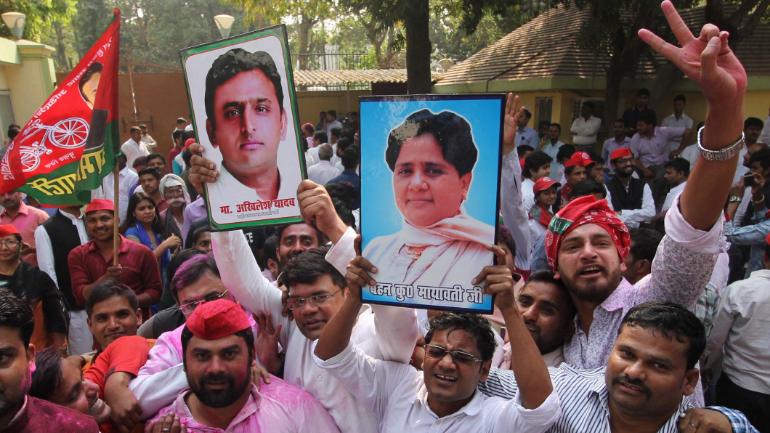
One Rajput candidate Meena Singh, daughter of a powerful Rajput landlord, contested for block pramukh post. Pitted against her was one Aishwarya Yadav, also from a rich Yadav family. She lost as she offered only Rs.5 lakh for each BDC (Block Development Committee members who are electors) as against Rs.10 lakh offered by Meena Singh.
Dalits also voted for Meena Singh despite conflicts. Money power prevailed here over caste identities.
Mohammad Salim points out the rivalry between Molajaats (Muslim Jats) and Hindu Jats were managed by Khap outfits during recent block pramukh polls.
Electoral politics can not only polarise, it can also depolarise and blur caste divides and make the elite of all castes rally behind rival political poles as it has happened in the case of DMK and AIADMK in TN. But a similar transition is yet to take place in UP and all political mobilisation, political battles and even political discourse are mediated through the prism of caste and community. Socio-cultural faultlines are so rigid that they prevail over the poll process.
The rise of BSP to power in UP definitely empowered local dalits and improved their social standing in the village-level or area-level power matrix. But there has not been a matching progress in their socio-economic position as well. So even these power gains could not be consolidated.
With Mayawati becoming politically ambivalent and less assertive now after the 2017 debacle, will there be further erosion in the objective position of dalits? Or, can she successfully negotiate for a stake in power?
Gyan Singh Patel, an ex-corporator from the BSP in Prayagraj, told The Federal that Dalits are still undecided and no party seems to be taking steps towards forging a Dalit-Muslim unity.
Nonetheless, the mood among a large section of Dalits has turned against the BJP. They too might vote tactically this time.
The mass of Muslims still sees SP as the only possible alternative that can dislodge the BJP from power. They don’t pin that kind of hope on the Congress.
But non-Yadav OBCs and MBCs have not yet started harbouring similar hope about the SP. Although elections are only seven months away and poll fever is picking up even during the elections to the block pramukh post, for some strange reason, a strong urge for a Mahagthbandhan is yet to acquire traction among all non-BJP opposition parties.
The M-Y (Muslim-Yadav) alliance became the core winning ticket for Yadav politicians and a security shield for the Muslims. Now the only dilemma of Muslims seems to be whether to put all their eggs in a single basket of the SP or to diversify their support among the Congress and the RLD and limit themselves to tactical voting.
Even the dalits do not have a similar hope on Mayawati after some demoralisation in the wake of 2017 assembly results.
A strong urge to widen and diversify the social alliance on the part of SP seems to be absent. The next few months in the run-up to the polls would be crucial in clarifying many of these issues.
